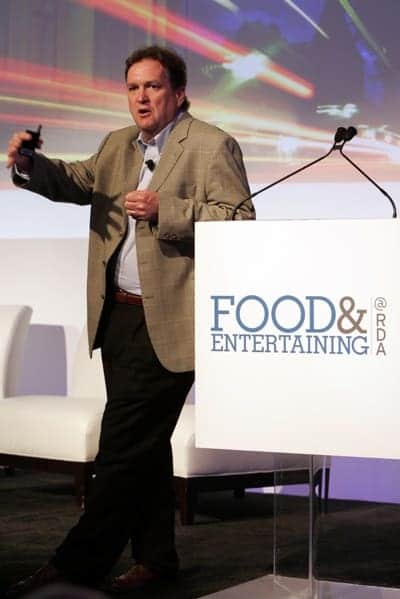 When the Readers Digest Food & Entertainment Division, based in New York, went looking for a keynote speaker on marketing and advertising trends within the consumer goods sector, they went with Jim Carroll.
When the Readers Digest Food & Entertainment Division, based in New York, went looking for a keynote speaker on marketing and advertising trends within the consumer goods sector, they went with Jim Carroll.
In an event co-sponsored with Advertising Age, the publisher of such innovative titles as Everyday with Rachel Ray wanted to provide a concise, inspirational but challenging overview of the trends impacting innovation, marketing and advertising within the food sector … and decided that Jim’s message on how to innovate at high-velocity was the ideal fit for their symposium.
Ironically, the event fell smack-dab in the middle of one of the wildest economic corrections that we’ve ever seen, and much of the discussion through the day focused on how to innovate in a fast-paced, ever more challenging economic environment.
I outlined how innovation-oriented organizations will use the economic challenges as an opportunity — they’ll examine the emergence of fast-paced trends, and will adjust their actions, products, services, and brand message accordingly.
Consider a few of the trends we’re already seeing:
- The food consumer is now shifting their focus — 71% of consumers are choosing to prepare meals at home instead of eating out as a result of the economic correction, Restaurant trips have decreased from 1.5 times a week in 2006, to 1.2 times today. (Food Marketing Institute US Grocery Shopper Trends 2008). There’s a big opportunity to rapidly shift to in-house meals, from a branding and comfort perspective.
- Chef Katie-Lee Joel, who also spoke at the event (she’s the author of the book The Comfort Table and a Top Chef judge on TV), affirmed this point, speaking of the trend in which “comfort food” — feel-good food — will once again take priority as people adjust their spending.
- other trends will pick up steam as people think more about their food consumption habits. For example, the trend to “local food” will pick up steam with the recession — people will want to feel responsible when it comes to food choice and the environmental footprint related to particular food. A study in Australia found that the typical shopping basket of 29 supermarket food items had travelled an astounding 70,803kms! An unbelievable number that certainly causes a pause for thought!
The key issue — organizations must have the capability to understand how their markets are changing quickly with the recession; how consumer choice is changing; and how their advertising, branding and marketing activities will need to change. It’s something I call corporate agility — it’s been covered extensively in this blog, and in my Ready, Set, Done: How to Innovate When Faster is the New Fast book.
It’s a critical concept to think about during these times.




GET IN TOUCH
Jim's Facebook page
You'll find Jim's latest videos on Youtube
Mastodon. What's on Jim's mind? Check his feed!
LinkedIn - reach out to Jim for a professional connection!
Flickr! Get inspired! A massive archive of all of Jim's daily inspirational quotes!
Instagram - the home for Jim's motivational mind!